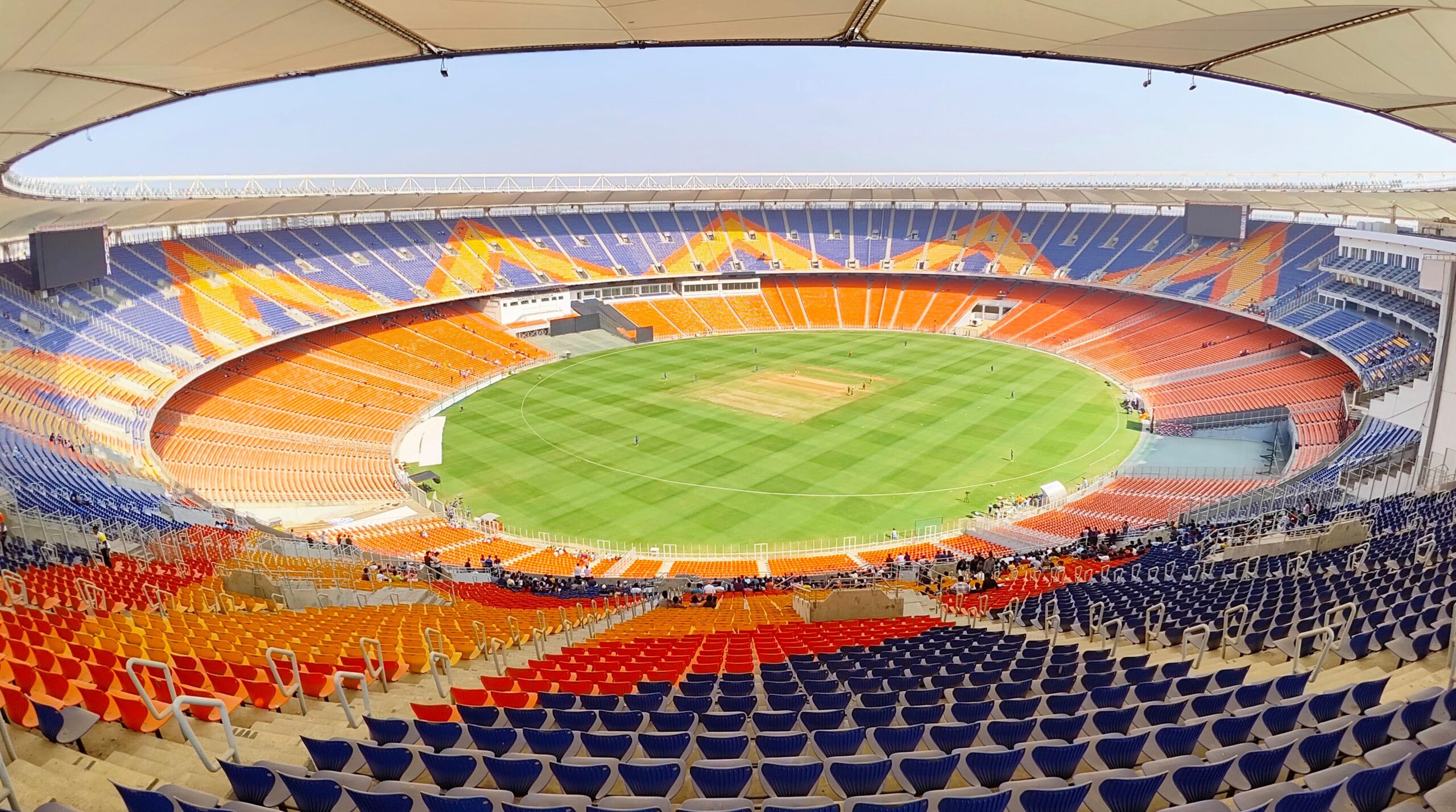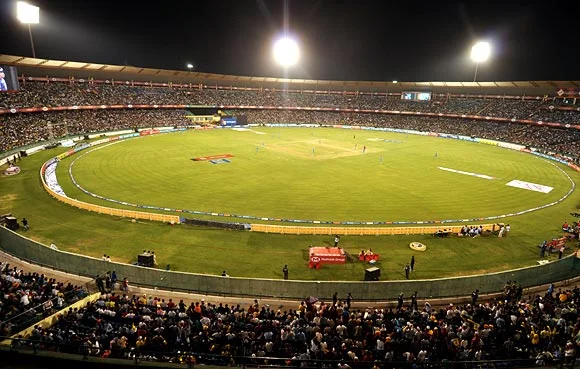Top 10 Largest Cricket Stadiums in the World (2025 Updated List)
Cricket is more than a game — it’s an emotion that fills entire stadiums with energy, colour, and community. Around the world, these grand arenas have become homes of history, passion, and unforgettable moments.
As the sport grows globally, so does its stage. From India’s modern colosseums to Australia’s historic grounds, here’s a look at the Top 10 Largest Cricket Stadiums in the World (2025 Updated List) — ranked by seating capacity and global significance.
Because at the heart of every great innings, there’s always a crowd that makes it special.
1. Narendra Modi Stadium – Ahmedabad, India
Capacity: 132,000
Opened: 1983 (Rebuilt in 2020)
Home Teams: India National Team, Gujarat Titans (IPL)
The world’s largest cricket stadium, the Narendra Modi Stadium, stands as a modern marvel in Ahmedabad. Spread across 63 acres, it hosts major Test, ODI, and T20I matches, including the ICC World Cup 2023 Final.
With state-of-the-art facilities, LED lighting, and four dressing rooms, it’s built to handle back-to-back matches. The atmosphere during India–Pakistan games here is unmatched — a true carnival of cricket.
2. Melbourne Cricket Ground (MCG) – Melbourne, Australia
Capacity: 100,024
Opened: 1853
Home Teams: Australia National Team, Melbourne Stars (BBL)
The MCG is one of cricket’s oldest and most loved venues. Known for its intimidating size and rich legacy, it has hosted two World Cup finals (1992, 2015) and countless Ashes Tests.
The “G” holds a sacred place in sports history — from Sir Donald Bradman’s genius to the 2015 World Cup triumph. It’s also the largest stadium in the Southern Hemisphere.
3. Eden Gardens – Kolkata, India
Capacity: 80,000
Opened: 1864
Home Teams: India National Team, Kolkata Knight Riders (IPL)
Known as the Mecca of Indian cricket, Eden Gardens combines legacy with emotion. It has hosted some of cricket’s most iconic matches, including the 2001 India–Australia Test and 2016 T20 World Cup Final.
Its passionate crowd and historical charm make it one of the most loved cricket venues in the world.
4. Shaheed Veer Narayan Singh International Stadium – Raipur, India
Capacity: 65,000
Opened: 2008
Home Teams: Chhattisgarh, Delhi Capitals (temporary IPL home)
Located in Naya Raipur, this stadium has become a popular international venue. Known for its scenic layout and smooth crowd management, it represents India’s growing infrastructure beyond the traditional metros.
5. Perth Stadium (Optus Stadium) – Perth, Australia
Capacity: 60,000
Opened: 2018
Home Teams: Australia, Perth Scorchers (BBL)
Optus Stadium brings modern design and technology together. With lighting systems that change colour based on the team playing, it’s one of the most fan-friendly cricket arenas worldwide.
Its fast pitches and vibrant Perth crowds make it a modern favourite for both players and spectators.
6. Rajiv Gandhi International Cricket Stadium – Hyderabad, India
Capacity: 55,000
Opened: 2003
Home Teams: India, Sunrisers Hyderabad (IPL)
Situated in Uppal, the Rajiv Gandhi Stadium is known for its electric IPL nights and passionate home crowd. The design ensures every fan gets a clear view, and the facility is among the best maintained in India.
7. Adelaide Oval – Adelaide, Australia
Capacity: 53,500
Opened: 1871
Home Teams: Australia, Adelaide Strikers (BBL)
The Adelaide Oval is one of the most picturesque cricket grounds on the planet. Surrounded by heritage architecture and lush green hills, it blends classic beauty with modern comfort.
It’s a ground where cricket feels both intimate and grand. The day-night Test tradition began here — a proud innovation from Australian cricket.
8. Ekana Cricket Stadium (BRSABV) – Lucknow, India
Capacity: 50,000
Opened: 2017
Home Teams: India, Lucknow Super Giants (IPL)
The Ekana Stadium is one of India’s newest additions to world-class cricket infrastructure. Its architecture ensures comfort for players and fans alike. In 2023, it hosted key World Cup matches, cementing its reputation as a reliable global venue.
9. Greenfield International Stadium – Thiruvananthapuram, India
Capacity: 50,000
Opened: 2015
Home Teams: India, Kerala State Team
Built inside a scenic hill range, the Greenfield Stadium combines natural beauty with modern design. Fans praise its clean layout, quick entry, and strong atmosphere during limited-overs games.
When rain delays hit, the ground staff’s quick turnaround time often becomes the highlight — a true sign of commitment.
10. The Oval – London, England
Capacity: 48,000
Opened: 1845
Home Teams: England National Team, Surrey County
The Oval is one of cricket’s most historic stadiums. It hosted the first-ever Test match in England in 1880 and continues to hold major matches, including The Ashes.
The ground’s classic charm, combined with its recent renovations, makes it a living piece of cricket heritage.
Honorable Mentions
While these are the current top 10 by capacity, a few others deserve recognition for their architecture, energy, and legacy:
-
Wankhede Stadium, Mumbai (33,000) – Iconic for India’s 2011 World Cup win.
-
HPCA Stadium, Dharamshala (23,000) – Arguably the most scenic ground in the Himalayas.
-
Gaddafi Stadium, Lahore (27,000) – Heart of Pakistan cricket.
-
Queen’s Park Oval, Trinidad (25,000) – Home to West Indies’ loudest crowds.
Each of these adds a unique flavour to cricket’s global journey.
The Scale of Modern Cricket
These giant stadiums represent more than numbers. They are where dreams turn into reality — from grassroots players who imagine walking onto these fields, to fans who travel miles to witness history.
As the game expands, so do the venues. Countries like the United States and UAE are also investing in new stadiums to meet the growing global demand for cricket.
The world’s largest stadiums remind us that cricket is both local and global — rooted in every community, yet shared by millions.
FAQ
Which is the largest cricket stadium in the world?
The Narendra Modi Stadium in Ahmedabad, India, with a capacity of 132,000.
Which country has the most large cricket stadiums?
India leads the list, with over five stadiums among the top ten by capacity.
What is the largest cricket stadium outside India?
The Melbourne Cricket Ground (Australia) with a capacity of about 100,000.
Which is the oldest large cricket stadium?
The Melbourne Cricket Ground (1853) and The Oval (1845) are among the oldest.
Are new stadiums being built in 2025?
Yes. Projects in the UAE and the United States aim to expand global cricket capacity.
Conclusion
The largest cricket stadiums in the world are more than arenas — they are theatres of memory, pride, and passion.
Every seat carries a story, every roar fuels the spirit of the game. From Ahmedabad’s modern fortress to London’s timeless Oval, these grounds connect cricket’s past and future.
And whether you’re scoring at your local ground or dreaming of these global stages, remember — your cricket matters.













